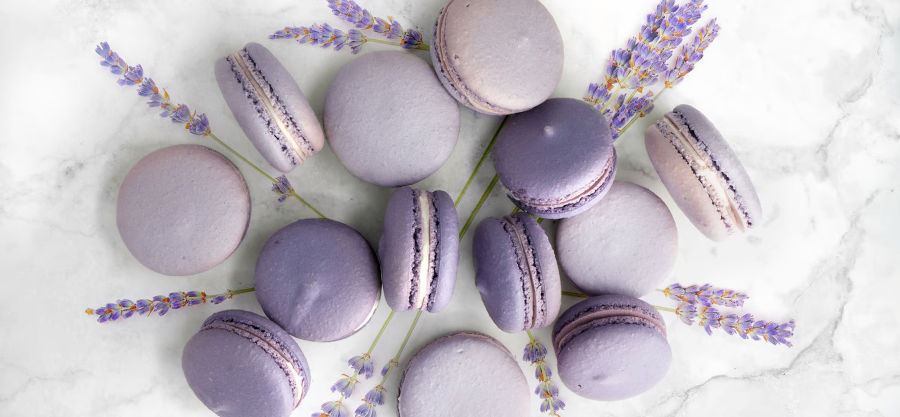In bakery applications, the use of natural color is one way in which brands can differentiate their products and boost their value proposition. Natural colors can also replace synthetic colorants in existing bakery products, as brands work to align their tried-and-true products with current consumer expectations.
Common technical challenges that arise when formulating with natural colors in bakery applications include color degradation during processing, color bleeding, and color fading over the product’s shelf life. “When selecting natural colors for bakery items with longer shelf lives, developers must consider various factors to maintain product quality,” explains Nidhi Jaiswal, MS, a food scientist specializing in human nutrition.
“Stability [of the natural color] is crucial,” Jaiswal notes. “Oxidation resistance and pH compatibility should be addressed, alongside packaging materials that protect against moisture, oxygen, and light. Fading of natural colors due to light, heat, or oxidation can be mitigated by storing items in opaque packaging, reducing light exposure, and incorporating antioxidants.”
Staunch support
Color bleeding is a significant concern in frozen baked items and layered or filled products. For these products, encapsulated natural colors are also a useful tool for developers. Common encapsulation techniques involve spray drying the natural pigment onto a carrier such as maltodextrin to improve stability of the color and standardize the hue. Freeze-drying the natural colors alongside a carrier is another encapsulation technique that can help preserve the natural pigment, producing highly concentrated powdered colors that might have lower cost-in-use than liquid extracts.

Although color makers have made great strides in deriving more brilliant colors from fruits and vegetables, pastel lavenders, pinks, and similar shades are trending. Image courtesy of: California Natural Color
Natural color solubility and usage rate within the formulation are also things developers should keep in mind. Generally, water-soluble natural colors work well in baked applications, although the moisture level of the finished product should be controlled to prevent color bleeding. In matrices where a crisp texture is crucial, such as crackers and cookies or biscuits, powdered natural colors or highly concentrated extracts and powders help formulators achieve the desired finished product texture.
In soft-baked products, concentrated natural colors are ideal, as they typically have lower usage rates that will not significantly impact the moisture level of the dough or batter. In high-fat bakery formulations, such as cheese crackers or biscuits, oil-soluble natural colors or emulsions can be used to prevent color migration and bleeding.
Classic tones
Common colors in bakery applications include browns, yellows, and oranges, which help to enhance warm and familiar tones that arise from baking. While caramel colors have been a staple in the baking industry to lend cooked and golden hues, today developers can achieve comparable results with natural browns that are derived from plant sources such as apples, carrots, and grains (e.g., barley and rice).

Innovations in natural color sources include clean-label caramel colorant replacers made from apple juice that can be labeled as “fruit juice (color).” Image courtesy of: Oterra A/S
Sources of naturally yellows and oranges commonly used in baked applications include turmeric, annatto extract, and carotenoids. Safflower extract is a common natural color used in the EU as a coloring food, providing shades that range from brilliant yellow to vibrant orange to radiant pink. Despite its versatility and stability over a wide range of processing conditions, safflower extract is not currently permitted for use in the US as a natural food color.
In baked applications with natural, gluten-free, or vegan positioning, developers can also leverage the inherent hues of other ingredients to create an inviting baked appearance. For example, gluten-free and vegan formulations can benefit from the subtle use of natural color to create an authentic, home-made appearance. “When developing natural white flour or whole grain plant-based pastries, consider interactions between ingredients and colors,” says Ron Pickarski, culinologist and founder of Eco-Cuisine, Inc. “Golden flax and tan fruit powders create an off-white flour pastry. Vegan pastries do not use eggs but a light yellow color, such as from annatto extract, imparts an egg-like hue.”
Natural novelty
Today, many brands are leveraging holidays, seasonal celebrations, and entertainment industry trends to deliver alluring novelties in the baked category. Looking ahead, reds and pinks will continue to be the most popular hues used in novelty bakery launches, while greens, blues, and purples will also appear in fun-loving new products.
Carmine, the natural pigment derived from the exoskeleton of the cochineal insect (Dactylopius coccus), has historically been a go-to natural red, as it can deliver a wide range of shades depending on usage level, from pinks to burgundy; is stable across a broad pH range; and withstands heat and light exposure.
However, being insect-derived, it cannot be used in kosher or halal products, or products with vegan or vegetarian positioning. Alternatively, anthocyanins derived from plant sources, such as beets, red cabbage, red radishes, and even sweet potatoes, are more widely used today to achieve red and pink hues in baked applications.
Most bakery formulations are close to neutral pH, within the 5.0 to 7.0 range. However, the use of chemical leavening agents can alter the pH of the matrix throughout processing, and anthocyanin pigments are notoriously vulnerable to pH shifts. In chemically leavened matrices with a low-temperature bake, beetroot extract, rich in colorful betalains, can help deliver a stable pink or red color.
Betalains are stable over a wider pH range, from around 3.0-7.0, and thus perform better in chemically leavened matrices where batter or dough pH might be lower before processing. Betalains, however, are heat labile and susceptible to Maillard browning, and are thus better suited for lower-heat processes, such as those used for muffins, soft-baked cookies, and cakes.
Blues, greens, and purples, while more novel in the bakery category, are gaining more widespread use as developments in color technology provide increasingly stable shades. Greens are typically created by blending blues and yellows. Blue anthocyanins derived from berries, blackcurrants, black carrot, red cabbage, and purple sweet potato are combined with bright yellow pigments from turmeric to create vibrant green hues. Being comprised of pH- and temperature-sensitive anthocyanins and light-sensitive curcumin, natural greens present the same technical challenges as natural reds, yellows, and oranges.
When formulating with natural colors in bakery applications, developers must keep ingredient interactions and processing conditions in mind. The presence of leavening agents, finished product moisture, and color solubility are all aspects that can impact natural color performance in baked products. The natural color regulatory landscape should also be top-of-mind. Developers should be aware of the intended markets of sale of the final product, as well as intended front-of-pack claims and certifications.
All natural colors possess unique benefits and limitations. Today, there are an unprecedented number of natural food color options that are stable, affordable, and accepted by consumers. From the most novel and intense shades in novelty offerings to the soft, warm, and familiar tones of classic pastries and breads, there is a suitable natural color option for all bakery formulations.
Regular contributor Olivia Conrad is a product development scientist and freelance science writer based in Boulder, Colo. She has extensive experience in natural food product development in categories ranging from frozen desserts to meat snacks. She also is an expert in food safety with a strong working knowledge of FSMA and HACCP. Contact her at oconrad2013@gmail.com.
The Color of Z
Consumer attitudes are evolving as more Gen Z shoppers make food purchases. While clean ingredient lines and wellness-promoting macronutrient profiles have become paramount to consumers across generations, the new wave of younger consumers is creating demand for additional value-addeds, such as innovative product delivery and design. From interesting texture combinations to never-before-seen packaging designs and irresistible shades, consumers today are demanding re-imagined and inventive food products.
